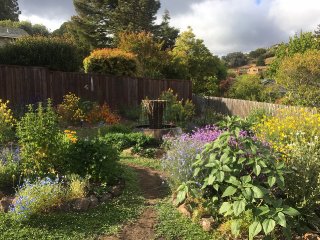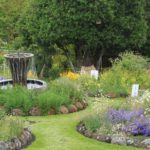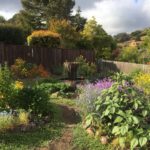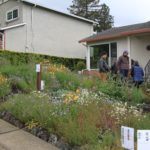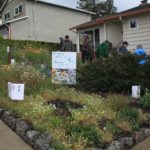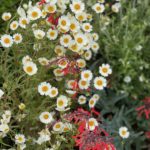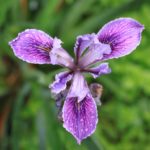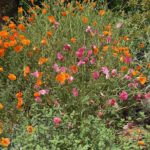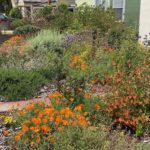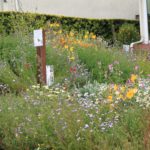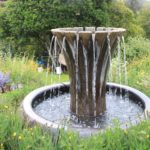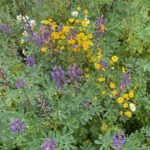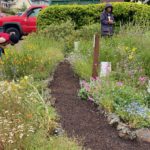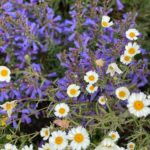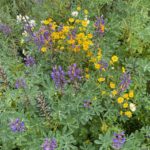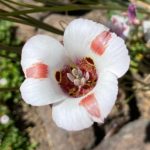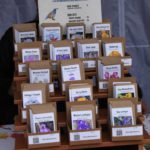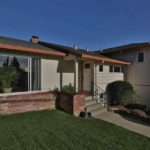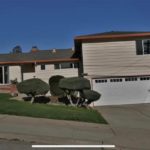Lot size: 1,100 sq. ft. front and 1,500 sq. ft. back garden, 99% native
Garden Age: Garden was installed in 2016
Years on the Bringing Back the Natives Garden Tour:
Showcase Feature
When Danny and Eugene moved into this house they knew the lawns and junipers had to go. In their place a series of moss-rock lined garden beds were installed and planted with a cheerful array of natives and edibles. (Many of the plants in this garden were grown from seed by Danny; ask him how!) Check out the Lippia repens (Phyla nodiflora) native “lawn;” it is water-conserving, evergreen, spreads vigorously, bears lavender-pink flower clusters, attracts butterflies and bees, takes foot traffic, and only grows to a few inches tall.
Other Garden Attractions 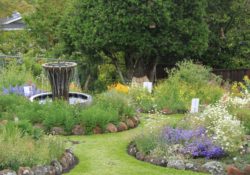
• Purchase California native wildflower and other native plant seeds at the garden! All of the seeds were collected in Danny and Eugene’s garden, and are packed by hand. These seeds are untreated, organically grown, and  non-GMO. As an added bonus, the seed packet is printed on a water-resistant label that can be used as a plant tag. Visit CaliforniaNativeSeeds.com to see what your choices are.
non-GMO. As an added bonus, the seed packet is printed on a water-resistant label that can be used as a plant tag. Visit CaliforniaNativeSeeds.com to see what your choices are.
• The sound of water splashing into the fountains in the front garden—and the back—attracts people as well as wildlife.
• Check out the Japanese quail that are raised in the aviary by the vegetable garden.
• Take a gander at the bountiful vegetable garden.
• Danny and Eugene’s gardening efforts have inspired two neighbors to remove their lawns.
Gardening for Wildlife
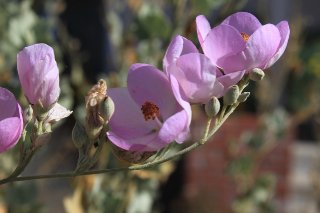
Nocturnal gray foxes have been seen in the garden. Anise swallowtail butterflies lay eggs on the yampah, their native host plant; mason bees nest here. Larval host plants for butterflies and moths include lupines, currants, gum weed, goldenrod, California grape, phacelia, milkweed, Dutchman’s pipevine, yarrow, and more.
Many people don’t know that without caterpillars, we will have no baby birds. Almost all baby birds must have caterpillars—thousands of them—while they are in the nest. These caterpillars come from the eggs laid by butterflies and moths, which will only lay their eggs on certain plants; the most powerful of these are called “keystone species.”
Keystone species in this garden (watch this talk by Doug Tallamy!)
Larval host plants in Danny and Eugene’s garden include Keystone species—our own, local ecological powerhouse plants—in this garden include currants, lupines, sages, buckwheats, goldenrod, aster, wild rose, native sunflower, native strawberry, and penstemon.
Green Home Features
Solar panels have eliminated Eugene and Danny’s PG&E bill, and they have installed a laundry-to-landscape graywater system. The house has been insulated. Bidet saves water and trees—and keeps one cleaner.
Video of Eugene and Danny’s garden
“Showcasing the early bloomers: Lilacs, manzanitas, currants, and wildflowers” by Eugene Shabelyanau and Danny Galindo

